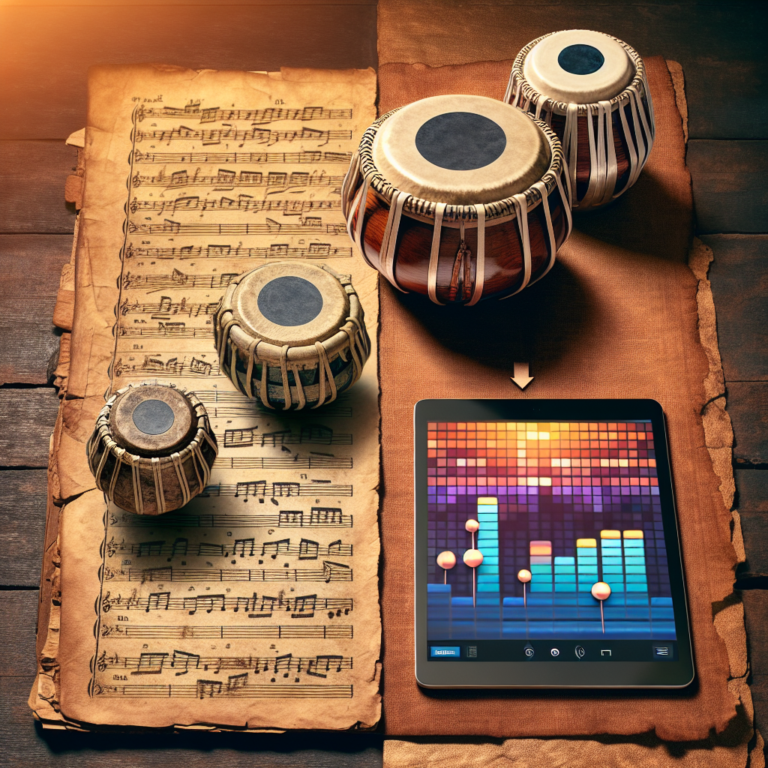Tabla music is a traditional form of Indian classical music that has a long and rich history dating back thousands of years. It is a percussion instrument consisting of a pair of drums, used mainly in Hindustani classical music and Indian devotional music.
The origin of the tabla can be traced back to ancient times, where it was used in various religious ceremonies, rituals, and festivities. The tabla has its roots in the ancient Indian percussion instrument called the pakhawaj, which was used in classical music as early as the 3rd century AD. Over time, the tabla evolved and became a standalone instrument, growing in popularity and becoming an integral part of Indian classical music.
The tabla is played using the fingers and palms of the hands, producing intricate rhythms and beats that form the backbone of Indian classical music. It is known for its unique sound, versatility, and ability to mimic the subtle nuances of vocal and instrumental music.
Throughout its history, the tabla has undergone several transformations and innovations, reflecting the changing tastes and preferences of musicians and audiences. In the early 18th century, the great musician and composer Amir Khusrau is credited with introducing new patterns and compositions to tabla music, paving the way for its evolution into a more complex and sophisticated art form.
In the modern era, tabla music continues to thrive and evolve, thanks to the efforts of dedicated musicians and innovators. Contemporary tabla players are pushing the boundaries of traditional music, incorporating new techniques, styles, and influences to create innovative and experimental compositions.
One such example is Zakir Hussain, a renowned tabla player who has revolutionized the art of tabla music through his mastery of rhythm and improvisation. Hussain’s performances are a fusion of traditional tabla techniques with elements of jazz, world music, and electronic music, showcasing the versatility and adaptability of the tabla in a modern context.
The evolution of tabla music from its ancient roots to modern innovation is a testament to the enduring appeal and relevance of this timeless art form. As musicians continue to explore new possibilities and push the boundaries of traditional music, the tabla will undoubtedly remain a vibrant and essential part of Indian classical music for generations to come.

